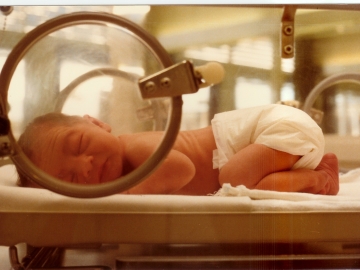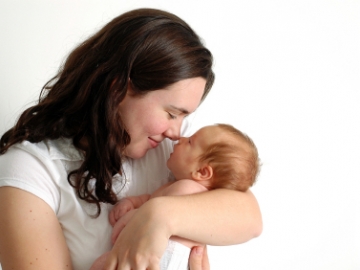Child
- About
- Meet The Team
- Conditions
- Dental Practitioners: Dental care in children at risk of Infective Endocarditis
- Looking after your child’s oral health
- Coming for an echocardiogram
- Outpatient Appointments
- Preparing to Come into Hospital for Surgery
- On Admission to the Children's Ward
- Visiting
- Operation Day
- Children's Intensive Care
- Daily Routine on Intensive Care
- Managing your child's discomfort
- Going Home
- Children's Cardiac MRI Scan
- Cardiac Catheter
- Reveal Device
- Ablation Procedure
- Pacemakers
- INR and Warfarin
- Lifestyle and Exercise Advice
- School Advice
- Attachment
- Yorkshire Regional Genetic Service
- Advice & Support Groups
- Your Views
- Monitoring of Results
- Second Opinion
Attachment
-
What is Attachment?
Attachment is a word used to describe the early relationship between parents or caregivers and their child. It is a strong, long lasting bond which develops between them. This strong bond allows a baby to feel safe and free to learn and explore. Having a healthy attachment is likely to help a child to become confident, self-sufficient and can help with forming relationships later in life.
In the information below we talk about parents, carers, mothers and fathers. Families are made up in many ways, this is general information, which may be able to offer some advice and support, who ever the care giver is.
-
How can I help a healthy attachment bond to develop?
A healthy attachment bond is likely to develop when a parent or guardian acts warmly towards their child and is responsive to a child’s needs. For example, making sure they get fed when they are hungry, warming them if they are cold, and protecting them and comforting them when they may be scared.
Having good attachment doesn’t mean you need to be with your child every minute of every day – that’s simply impossible!
If parents are there as much as they can be children quickly learn over the first few years of life that their parents or caregivers are a base of safety, warmth and joy for them, and this is the starting point of a very healthy attachment bond.
-

-
When does an attachment bond develop?
Of course it is important to interact with and care for a child as much as possible from birth but there is no specific time where all children will show signs of attachment by.
Some signs of an attachment developing are when children begin to become anxious when they are separated from mum and dad but when they are reunited with their parents they are calm and happy, this shows that the child knows that their parent is a safe base.

-

It’s important for a child to be able to explore and to interact with other people, and as the child gets older they may explore further and further from the parent without becoming upset (e.g. to the other side of a room or to a different room to find a toy), this is OK! This shows that the child knows that if they needed mum or dad they know they would be there for them, even if they aren’t right next to them, and this is a sign of a very healthy attachment bond.
-

Number 1 Tip for Attachment
It is important to be responsive to your baby or child’s needs.To show they need attention young babies may:
• Make eye contact
• Make little noises
• Look relaxed and interested
• CryTo show when they need a break or maybe a different, gentler approach young babies may:
• Look away
• Shut their eyes
• Struggle or pull away
• Yawn
• Cry -
BUT it is important to remember this is not the only way to show attachment! Children have different personalities and especially if they are in an environment where they are meeting a lot of new people (like a hospital) this sign may never show at all. This doesn’t mean they don’t have a good attachment with mum and dad! If a child is happy when mum and dad are there and enjoys playing with them this is a sign of a very healthy attachment bond.

-

Responding to these signals and giving your baby what it needs is a key building block of attachment. It says to the baby that they have been heard and responded to and this makes them feel safe and calm.
Its important to remember that when a baby shows signals that they need a break they are not rejecting you, they are simply showing their own needs. Small babies cannot yet think about someone else’s needs.
-

As well as being responsive to a child’s needs, healthy attachment is also about joy and pleasure, therefore playing with a baby and doing anything that brings the parents and child joy is likely to contribute to a very healthy relationship
In the first few months of life babies will become familiar with their parents scents, sounds and touches and this contributes to them developing a healthy attachment bond
-
Other Quick Tips for Attachment
Talk to your child or baby, read them stories and generally have conversations with them, even if they can’t answer back.
Play with your child, any kind of play or doing any activity that brings you and your child joy is great for attachment
Be there for your child, it may seem very simple but just being supportive and helping your child in any way you can will really help attachment
Cuddle or touch your child, of course for some children this isn’t possible but this is ok! Just being around your child will allow them to get used to your smell and when they are well enough you will be able to touch them.
Ask a nurse about using a Baby Bonding Square, these allow the baby and mum or dad to share each other’s scents which can be really helpful for early attachment, especially if the baby isn’t well enough to cuddle yet.

-

Baby Bonding Squares
These squares are available for mothers (& fathers) and babies on the cardiac ward. Mothers can take a pair of squares, baby keeps one in the incubator/cot and mum keeps the other one on her person. When the mother visits then these can be switched around.
This encourages bonding because even when mum isn’t there or isn’t able to pick him/her up, the baby can smell her and become familiar with mums scent. It is also a comfort to mum to be able to smell the baby when she has to leave. The scent of the baby also triggers the release of hormones in mum which are needed for the expression of breast milk, which mothers with poorly babies can often struggle with due to lack of close contact.
If you are interested in using a Baby Bonding Square ask a nurse for more details they are available free on the ward!
-
Will having surgery or being on the cardiac ward affect my child’s attachment?
Attachment is about much more that simply holding your child. Being around your child as much as you can, reading to them, playing and interacting with them and being supportive wherever you can will mean that there is still going to be a healthy attachment bond developing between you.
When a child is on the ward, and so you may not be able to be around all the time, there are extra things you can do to help yourself and your baby bond, for example using a Baby Bonding Square.

-

What do we know?
One recent piece of research looked at early mother-infant relationships after cardiac surgery in infancy and found that:
• The majority of mothers reported that they felt they had a positive relationship with their infant 4 weeks after their child was discharged
• Some mothers described a stronger or closer bond with their baby than before surgery. -
What do we know?
Another piece of research into infant cardiac surgery and the father-infant relationship found that:
• Some fathers felt that their relationship with their infant was closer once their child had been discharged
• Fathers who felt less close with their child often reported this was because they were worried about being medically fragile.
• Encouraging fathers to interact with their child and provide as much physical care as possible while in and out of hospital may help increase a feeling of closeness and bonding.
